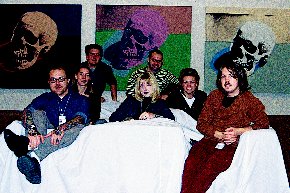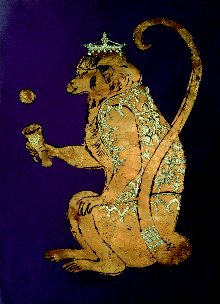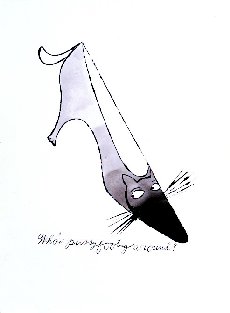 |
|||
|
|
|
|
|
 |
|||
|
|
|
|
|
"Ask me About Andy!" |
 Meet the Gallery Attendants
Where do you guys come from? "I majored in education. I draw and sketch." "I was a film studies major. I make my own short films." "I worked at the Impressionist Art Gallery in Memphis." "I was a visual merchandiser." "I worked in retail. I’m also a musician." "I studied the arts. I worked in a tattoo shop." "I majored in anthropology." What did you know about Andy Warhol before you came here? "Soup cans." "Soup cans." "Soup cans." What do you know about him now? "Now I know how broad his body of work is." "He was a very eclectic artist who used many different media." "His work has such variety." What are some of the most common questions visitors ask? "Was Andy married?" (No.) "Did Andy die of AIDS?" (No.) "Why is The Andy Warhol Museum in Pittsburgh?" (Because Warhol was a native of Pittsburgh.) "Was Candy Darling a man or a woman?" (Man.) What’s so great about The Andy Warhol Museum? "It’s a hip museum in a city that has never been considered hip. It enhances our reputation in national and global cultural circles." "It educates people about the time period and the cultural milieu in which Andy worked." "It contributes to the acceptance of the gay and lesbian community in Pittsburgh." "The museum and Andy Warhol’s legacy are catalysts for all kinds of local art—visual, film and video, music, and dance." "You don’t have to like Warhol’s art, but it’s great to be exposed to
it."
|

Andy Warhol Drawings, 1942-1987By Jordan WeeksFebruary 27 –April 30"He believed that you could only break the rules if you knew what they were." -- Director Thomas Sokolowski
While Andy Warhol is generally associated with
enormous POP art photo-silkscreens, it’s a little-revealed fact that he
started out with drawings and remained a facile and studied draftsman throughout
his life. He began his professional career as a commercial illustrator,
drawing shoes and scarves and the like for magazine ads, and, despite the
view, remained committed to the medium throughout his life.
Andy Warhol Drawings, 1942-1987, the first ever exhibition dedicated
solely to Warhol’s drawings, arrived at The Warhol Museum on February 27
after a year-and-a-half international tour. Its Pittsburgh appearance is
made possible by the Campbell’s
A retrospective of sorts, Drawings reveals the role drawing played in Warhol’s life from his earliest drawings from his school days in Pittsburgh (including a self-portrait from when he was 14 years old), to his last drawings in 1987, the year he died, and touches on everything in between.  Some of the work reveals his financial condition as an artist. Earlier drawings are often in pen on inexpensive paper, since he couldn’t yet afford more permanent, better-lasting materials, and others show the commercial art process he had to go through (he kept most of his magazine art director-marked sketches intact). Some drawings simply divulge his current subjects of interest, including his 1986 visit to Japan, and his gold leaf-infused drawings. Co-organized with former Warhol Museum chief curator Mark Francis and Dieter Koepplin, curator of Drawings from the Offentliche Kunstsammlung at the Kunstmuseum Basel, Switzerland, the Drawings exhibit was made possible in Pittsburgh by the Campbell’s Soup Company. "Warhol’s drawings show an intimate and private side to his art that has often been obscured by the light of his other, more spectacular activities," says museum director Thomas Sokolowski. "However, Andy Warhol was a fluent draftsman all his life; even though through most of his professional life he utilized silkscreen process, drawings were very much the rudimentary armature of his work. He never stopped drawing," although this closely-maintained tie to a traditional artistic practice has often been overlooked by naysayers who couldn’t get past the spectacle of his larger-than-life POP pieces. "Very often in Warhol’s life," Sokolowski continues, "there was criticism
of him—that he was someone who just worked mechanically, that his work
was just assembly-line," but, as is evident in this exhibition, this was
clearly not the case. "He learned to draw at Carnegie Mellon University,
took very traditional art classes, and what’s interesting is that during
the last six, seven years of his life, he was one of the first board members
of a place called New York Academy, which was—and is—a very traditional,
almost old-fashioned art school in New York City. The Academy trains artists
much the same way artists were trained in the sixteenth century: they draw
after nudes, they draw after classic casts of marble and classical sculpture,
they copy works of art by great masters. Those basic technique and skills
are very important. I think a lot of people don’t understand that even
though Warhol was very modern and very avant-garde in many ways, he believed
that you could only break the rules if you knew what they were."
|
|
|
|
|
|
|
All rights reserved. E-mail: carnegiemag@carnegiemuseums.org |
|||